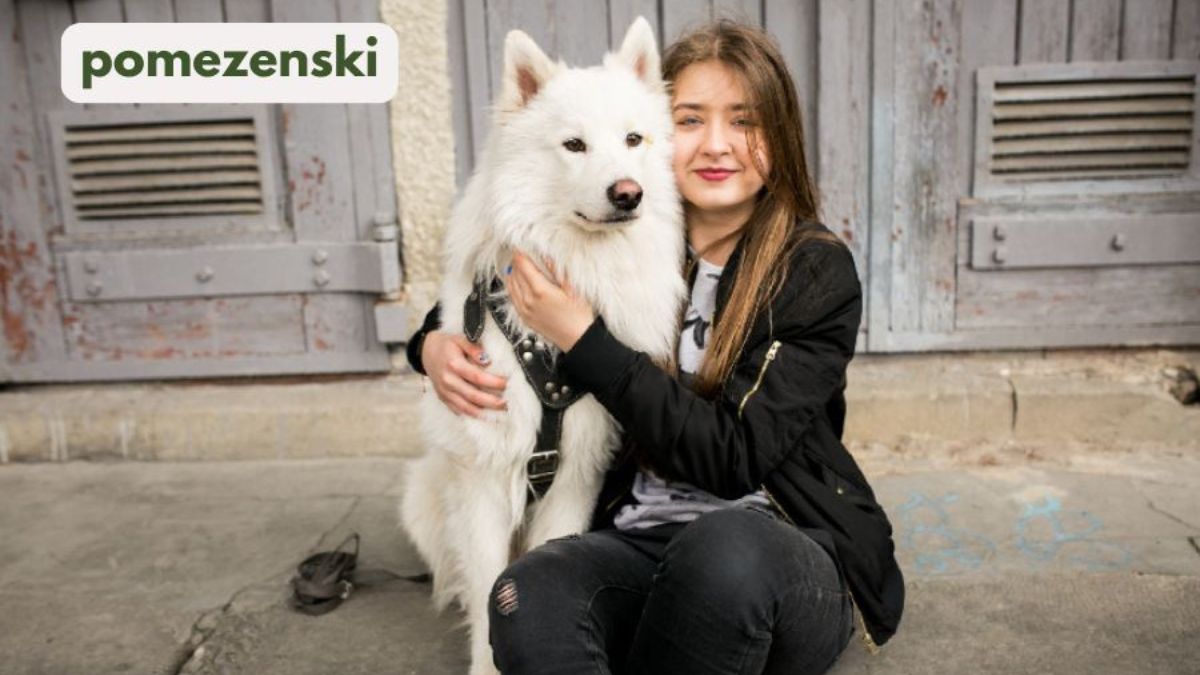News
Pomezenski Festivals and Events: Celebrating Community Spirit

Pomezenski festivals and events are vibrant celebrations that pulse with life, color, and a deep sense of community. These gatherings aren’t just about festivities; they embody the spirit of togetherness that brings people from all walks of life closer. Whether it’s through music, food, or traditional practices passed down through generations, Pomezenski celebrations create lasting memories and connections. If you’ve ever felt the warmth of a shared experience among friends and strangers alike, then you understand what these festivals represent.
As we dive into the rich history and significance behind Pomezenski events, you’ll discover how they have evolved over time while remaining true to their roots. From exciting activities to community bonding moments, every aspect plays a role in forging stronger ties within neighborhoods. Join us on this journey to explore some of the most exhilarating Pomezenski festivals around the globe!
The history and significance of these celebrations
The origins of Pomezenski festivals can be traced back to ancient traditions. These celebrations were rooted in agricultural cycles, marking the changing seasons and harvests. Communities would gather to honor their crops and give thanks for bountiful yields.
As societies evolved, so did the significance of these events. They transformed into expressions of cultural identity and unity. Each festival became a canvas showcasing local customs, music, and art.
These gatherings also served as vital social hubs. Families reconnected while newcomers found a sense of belonging. Over time, Pomezenski festivals have become more than just seasonal observances; they are now integral parts of community life.
In many regions, these celebrations highlight resilience and shared values amid challenges. The spirit behind them fosters connections that transcend generations, making each event memorable for all who participate.
You may like also:Why dave watkin aggreg8 is Essential for Modern Businesses
Traditional elements and activities of Pomezenski festivals
Pomezenski festivals are vibrant showcases of culture and tradition. Each event is a tapestry woven with local customs, music, dance, and art.
At the heart of these celebrations lies traditional music. Local musicians often perform folk songs that echo through the streets. The melodies carry stories from generations past.
Dance is another integral element. Participants don traditional costumes and engage in lively dances that invite everyone to join in. It fosters a sense of unity among attendees.
Culinary delights also play a crucial role. Food stalls brim with regional specialties, offering flavors unique to Pomezenski heritage. Tasting these dishes creates shared experiences amongst festival-goers.
Artisans display their crafts too—handmade goods that reflect cultural artistry and skill. Visitors often leave with souvenirs that hold memories of their time spent celebrating community spirit together.
Games for children add an extra layer of joy, ensuring every age group finds something enchanting within the festivities.
How these events bring the community together
Pomezenski festivals create a vibrant tapestry of community life. These gatherings invite people from all walks of life to come together and celebrate shared traditions.
As friends and neighbors mingle, they foster connections that might not happen in everyday settings. Strangers become acquaintances, often leading to lasting friendships.
The atmosphere buzzes with excitement as families participate in various activities. From traditional dances to culinary showcases, every element promotes collaboration and camaraderie.
Volunteers work side by side, reinforcing bonds while ensuring the event runs smoothly. This teamwork highlights a spirit of unity that resonates long after the festivities end.
Moreover, local businesses thrive during these celebrations. When residents support each other’s ventures, it strengthens the entire community fabric.
In essence, Pomezenski festivals are more than just events; they serve as vital links that keep communities intertwined through joy and shared experiences.
Impact on local economy and tourism
Pomezenski festivals are vital to local economies. They draw in visitors from near and far, creating a surge in demand for services. Hotels fill up quickly as festivalgoers search for accommodations.
Restaurants also benefit tremendously during these events. They showcase local cuisine, attracting food enthusiasts eager to try new flavors.
Moreover, artisans and vendors find opportunities to sell their crafts and products at these gatherings. This not only supports small businesses but elevates the community’s cultural heritage.
Tourism thrives as people travel specifically for Pomezenski celebrations. Local attractions see increased foot traffic, helping sustain year-round growth.
The ripple effect of these festivals fosters collaboration among businesses, encouraging them to work together on future initiatives that can further enhance visitor experiences while boosting the economy simultaneously.
Top Pomezenski festivals and events around the world
Across the globe, Pomezenski festivals showcase rich traditions and vibrant cultures. One notable event is the Pomezenski Harvest Festival in Poland, where locals celebrate the bounty of their fields with colorful parades and delicious food stalls.
In Brazil, the Carnival de Pomezenski features lively samba music and dazzling costumes that reflect a blend of indigenous and European influences. This festive atmosphere draws crowds eager to dance and partake in local customs.
Moving to Italy, Festa di Pomezenza immerses visitors in age-old rituals celebrating community bonds through traditional games, folk dances, and mouthwatering regional dishes.
Every festival highlights unique flavors and experiences while fostering connections among attendees from diverse backgrounds. Each celebration serves as an invitation for everyone to participate in joy-filled gatherings that honor heritage and create lasting memories.
Tips for attending a Pomezenski festival or event
Attending a Pomezenski festival can be an exhilarating experience. Start by planning your visit in advance. Research the schedule and highlights to ensure you don’t miss out on any must-see activities.
Dress comfortably for the occasion. Festivals often involve lots of walking, dancing, and exploring various stalls. Wear shoes that can handle long days.
Stay hydrated and snack wisely. Local food is part of the adventure, but keep water handy to stay refreshed throughout the day.
Engage with locals and fellow attendees. Share stories or ask questions about traditions; it enriches your experience significantly.
Embrace spontaneity! Some of the best memories come from unplanned moments—whether it’s joining a dance circle or discovering hidden performances around every corner. Enjoy every bit!
The future of Pomezenski celebrations
As communities evolve, so do their traditions. Pomezenski celebrations are no exception. With the rise of digital technology and social media, these festivals are embracing new platforms to reach wider audiences.
Virtual events have started gaining traction, allowing people from all over the globe to participate in festivities that were once limited to local attendees. This shift can spark greater interest in cultural heritage.
Sustainability is another emerging trend. Many organizers are now focusing on eco-friendly practices, ensuring that future celebrations honor not just community spirit but also the environment.
Inclusivity has become paramount as well. The diverse nature of modern society encourages more inclusive activities and representation within festivals.
These changes promise an exciting evolution for Pomezenski celebrations, blending tradition with contemporary values while keeping community engagement at its heart.
Conclusion:
Pomezenski festivals and events embody the essence of community spirit. They create vibrant atmospheres where traditions are celebrated, and new memories are forged.
Attending these gatherings allows individuals to connect with their heritage while embracing diversity. Each festival offers a unique experience that enhances cultural appreciation.
The impact on local communities is profound, as these events encourage participation and foster relationships among residents. Tourism flourishes, bringing economic benefits that uplift neighborhoods.
As Pomezenski celebrations continue to evolve, they stand resilient against change. The future promises innovative twists on cherished traditions while maintaining a focus on unity and joy in shared experiences.
Engagement through these festivities strengthens ties within the community and invites visitors from afar to join in the celebration of life’s rich tapestry.
FAQ’s:
What is a Pomezenski festival?
A Pomezenski festival is a community event centered around cultural traditions, music, food, and arts that celebrate local heritage.
When do these festivals typically take place?
Dates can vary widely depending on location and tradition. Many occur during specific seasons or align with historical anniversaries.
Are there any age restrictions for attending?
Most Pomezenski festivals welcome all ages. Some activities may have recommendations or restrictions based on safety considerations.
How can I participate in one of these events?
Participation varies by festival but generally includes engaging in traditional dances, trying regional foods, or volunteering to help organize activities.
What should I wear to a Pomezenski festival?
Comfortable clothing suited for outdoor activity is advisable. Traditional attire may be encouraged at some events to honor cultural practices.
Can tourists attend these local celebrations?
Absolutely! Many festivals encourage visitors to join in the festivities and experience the unique local culture firsthand.
By exploring what makes each celebration special, you deepen your understanding of the world around you—one joyous gathering at a time.
News
Unlocking the Secrets of lwedninja: Your Ultimate Guide

The digital landscape is brimming with unique applications and platforms that promise to simplify our lives and enhance productivity. Among these innovations, lwedninja is quickly gaining recognition for its cutting-edge features and versatility. But what exactly is lwedninja? How can it transform your daily routine, help streamline your work processes, and add value to your projects?
If you’re new to lwedninja or simply curious about its potential, this guide is your complete resource to uncovering its secrets. From understanding its functionalities to discovering how it can revolutionize your workflow, we’ll explore.
What is lwedninja?
At its core, lwedninja is an advanced software platform designed to enhance productivity, creativity, and efficiency across various industries. Built with innovation and adaptability in mind, it offers intuitive tools and features that cater to users of all skill levels, from novices to seasoned professionals.
Whether you’re managing a small business, working on a creative project, or supervising complex workflows, lwedninja positions itself as the go-to solution streamlined to meet diverse user needs. The platform combines expert-level functionality with a user-friendly interface, making it accessible yet powerful for tackling any challenge.
Key Features of lwedninja
lwedninja’s feature suite ensures that it stands out as a superior digital solution. Some of its hallmark features include:
- Adaptive Interfaces: A streamlined interface tailored to enhance ease of use.
- Automation Tools: Simplify repetitive tasks with AI-driven automation capabilities.
- Robust Analytics: Gain actionable insights through detailed reports and data visualization tools.
- Cross-Functional Integration: Connect seamlessly with other platforms and tools without any friction.
- Customizable Features: Adapt the platform to suit specific business or personal requirements.
The combination of these features enables users to accomplish more in less time while maintaining high-quality results.
Why lwedninja is a Game-Changer
With countless platforms saturating the market, why should lwedninja be your first choice? It all boils down to three distinct advantages that help users thrive in their professional and personal projects.
- Enhanced Efficiency
lwedninja is purpose-built to save you time. From automated workflows to predictive analytics, every tool is crafted to reduce redundant processes. For example, its automation tools can eliminate repetitive administrative tasks, allowing teams to focus on more creative and high-impact projects.
- Actionable Analytics
Understanding your data is half the battle in today’s data-driven world. With lwedninja’s analytics capabilities, users can look beyond the numbers to extract meaningful insights. Whether you’re tracking productivity, evaluating market performance, or projecting trends, its robust analytics allow for smarter, data-backed decision-making.
- Customizable Functionality
Every user has unique needs, and an off-the-shelf solution simply doesn’t cut it. With lwedninja’s customizable tools, users can modify dashboards, prioritize specific data sets, and even program automated workflows tailored to their requirements.
Origins and Vision Behind lwedninja
The story of lwedninja begins with a simple yet bold vision—to redefine how people interact with technology to achieve their goals. Unlike many platforms that merely enhance specific tasks, lwedninja was conceived to provide an integrated ecosystem that empowers users to thrive creatively and strategically.
With innovation at its center, its creators envisioned a tool that evolves alongside technological advancements, ensuring users worldwide can stay ahead of the curve.
Commitment to Continuous Improvement
A standout element of lwedninja is its commitment to continuous improvement. Frequent updates ensure a seamless experience, introducing advanced features while maintaining reliability. This dedication reflects its proactive approach to meeting the changing needs of the modern user.
How to Harness lwedninja to Its Full Potential
Getting started with lwedninja is straightforward, but unlocking its full capabilities requires an informed approach. Here’s a step-by-step guide to mastering this game-changing platform.
Step 1. Set Clear Goals
Before getting started, define your objectives. What problems do you want to solve with lwedninja? Whether it’s automating processes, analyzing data, or creating customized workflows, identifying your purpose lays the foundation for success.
Step 2. Leverage Tutorials and Training
Don’t miss out on lwedninja’s extensive tutorials and training resources. From demo videos to live webinars, these tools demystify even the platform’s most advanced features, empowering you to maximize its functionality.
Step 3. Test Integrations
Seamlessly integrate lwedninja with your current tools and software. Sync your calendar, spreadsheet applications, or customer relationship management (CRM) platforms to ensure a cohesive and connected digital workspace.
Step 4. Experiment with Automation
Automating your most repetitive tasks is one of lwedninja’s strongest value propositions. Whether you’re automating data entry or generating automatic email reports, take full advantage of this feature to free up time for more strategic objectives.
Step 5. Collaborate Through the Platform
lwedninja encourages collaboration between team members. Use its shared dashboards and collaborative tools to keep your team aligned and focused on achieving their goals.
Real-Life Applications of lwedninja
Curious about how lwedninja functions in real-world scenarios? Here are two examples.
- Marketing Teams
lwedninja is a game-changer for marketing teams looking to create impactful campaigns. With tools for in-depth analytics, predictive modeling, and content scheduling, marketers can produce high-ROI strategies tailored to their audiences.
- Project Managers
For project management professionals tasked with supervising complex workflows, lwedninja ensures no component is overlooked. Its Gantt charts, progress reports, and task prioritization tools streamline even the most complicated of projects.
Unlock the Full Potential of lwedninjaToday
The successes of users highlight a powerful truth—it’s more than just a software platform. It’s a partner in achieving your goals, streamlining workflows, and unlocking your true potential. By bringing cutting-edge tools directly to your fingertips, lwedninja empowers individuals and organizations to work smarter, not harder.
Whether you’re a business manager, marketer, or creative professional, lwedninja’s unmatched capabilities are here to elevate the way you work. Stop relying on outdated tools and start relying on intelligent innovation with lwedninja.
Conclusion
Achieving success in today’s fast-paced environment requires more than dedication; it demands the right tools to drive efficiency and innovation. lwedninja stands at the intersection of capability and accessibility, offering a platform that transforms the way you perform and deliver results. Don’t settle for mediocrity when you can harness the power of a solution built to maximize your potential. The future of productivity starts here—join the lwedninja community today and redefine what’s possible.
FAQ’s
What is lwedninja?
lwedninja is an innovative productivity platform designed to help individuals and teams optimize performance, streamline workflows, and achieve better results through intelligent tools and features.
Who can benefit from using lwedninja?
lwedninja is versatile and adaptable, making it ideal for professionals, small businesses, and enterprises across various industries who want to enhance efficiency and boost productivity.
How does lwedninja improve productivity?
By combining cutting-edge technology with user-friendly design simplifies complex tasks, automates repetitive processes, and enables smarter decision-making, saving time and resources.
News
Exploring Mangareader: Your Ultimate Guide to Reading Manga Online

Are you a manga enthusiast searching for the best way to indulge in your favorite stories? Look no further than Mangareader, a treasure trove of captivating tales and stunning artwork. This platform has become a go-to destination for readers who crave instant access to countless titles from various genres. Whether you’re into action-packed adventures, heartwarming romances, or spine-chilling thrillers, Mangareader has something for everyone.
With an endless library at your fingertips, reading manga online just got easier and more enjoyable. Join us as we explore all that Mangareader has to offer—from its user-friendly interface to popular titles worth checking out. Get ready to dive deep into the world of manga with this ultimate guide!
Advantages of Reading Manga Online
Reading manga online offers remarkable convenience for fans everywhere. You can access a vast library of titles from the comfort of your home or on the go, all through your device.
No need to hunt down physical copies at stores. With just a few clicks, you can dive into countless stories and genres.
Digital platforms often provide regular updates when new chapters are released. This keeps you engaged with ongoing series without missing a beat.
Online reading also allows for easy bookmarking and organization of your favorite titles. You can track where you left off effortlessly.
Another advantage is the ability to discover niche and indie works that may not be available in print form. Online platforms expand your horizons beyond mainstream selections, offering unique narratives and artistic styles that cater to diverse tastes.
Navigation and User Interface
Navigating Mangareader is a breeze, thanks to its intuitive design. The layout is clean and user-friendly, allowing readers to find their favorite titles effortlessly.
At the top, you’ll see search bars and categories that guide you through various genres. Whether you’re in the mood for romance or adventure, everything is just a click away.
The artwork showcased on the homepage draws you in immediately. Thumbnails are well-organized, making it simple to spot trending mangas or newly released chapters.
Scrolling down reveals personalized recommendations based on your reading history. This feature helps you discover hidden gems tailored to your taste.
Additionally, each manga page provides options for different viewing modes—ideal for those who prefer zooming into intricate details or wish for a distraction-free experience. You’ll appreciate how quickly you can switch between chapters without losing your place too!
Popular Manga Titles on Mangareader
Mangareader boasts a diverse library filled with captivating titles that cater to all tastes. Whether you’re into shonen, shojo, or seinen genres, there’s something for everyone.
Hit series like “My Hero Academia” and “Attack on Titan” draw readers into thrilling worlds where heroes battle against overwhelming odds. For those who prefer heartwarming tales, “Your Lie in April” offers an emotional journey through music and love.
Fans of fantasy will revel in the enchanting realms of “One Piece,” while slice-of-life lovers can enjoy the relatable stories found in “March Comes in Like a Lion.” Mystery enthusiasts might find themselves engrossed by titles such as “Death Note,” which blends suspense with intellect.
Each manga title comes packed with unique characters and intricate plots. This variety ensures every visit to Mangareader is fresh and exciting, encouraging readers to explore new adventures regularly.
How to Create an Account on Mangareader
Creating an account on Mangareader is a straightforward process that enhances your reading experience. Start by visiting the official website.
Look for the “Sign Up” button, usually located at the top right corner of the homepage. Click it to begin. You’ll be prompted to enter some basic information like your email address and a secure password.
After filling in these details, make sure to check any terms and conditions if required. It’s essential not to skip this step as it ensures you understand what you’re signing up for.
Once submitted, you’ll receive a confirmation email. Open it and click on the verification link provided. This will activate your account.
With everything set up, you can now dive into your favorite manga series while enjoying personalized features tailored just for you!
Features for Customization and Organization
Mangareader offers a range of features that allow users to tailor their reading experience. One standout option is the ability to create personalized lists. Users can categorize manga by favorites, currently reading, or want-to-read.
Customization extends beyond just lists. You can adjust display settings according to your preferences. Whether you prefer light mode for daytime reading or dark mode for late-night sessions, Mangareader has you covered.
Bookmarking chapters is another helpful feature. It ensures you never lose your place in an ongoing saga. With easy navigation through saved bookmarks, finding where you left off becomes a breeze.
Moreover, the search function helps locate specific titles quickly. Filters let readers narrow down choices based on genre or status—be it ongoing or completed series—making it easy to discover new stories tailored to individual tastes.
Community Interaction and Reviews
Mangareader thrives on community interaction, making it more than just a reading platform. Readers can dive into discussions about their favorite series, share insights, and even speculate on upcoming plot twists.
Users have the option to leave reviews for titles they’ve read. This creates a vibrant ecosystem where opinions flow freely. The variety of perspectives enhances the overall experience for everyone involved.
Engagement doesn’t stop at reviews. Mangareader often hosts polls and events that encourage users to participate actively. Fans can vote on which manga should get featured or suggest themes for future discussions.
This sense of belonging fosters connections among readers who share similar interests. You might find someone with an identical taste in genres or hidden gems you haven’t discovered yet!
Alternatives to Mangareader
If you’re exploring alternatives to Mangareader, you have some great options. Websites like MangaFox offer a similar reading experience with a vast collection of titles.
Another popular choice is Viz Media. This platform provides official access to many well-known series, ensuring quality and legality in your manga consumption.
Crunchyroll also features manga alongside its anime offerings. Subscribers can enjoy both formats seamlessly in one place.
For those who prefer mobile apps, Manga Plus by Shueisha delivers up-to-date chapters directly from Japan. It’s perfect for staying current with trending titles.
Webtoon specializes in webcomics but includes various genres that might pique your interest if you’re open to exploring beyond traditional manga-style narratives. Each alternative has unique features worth checking out!
Conclusion
Reading manga online has never been easier or more enjoyable. Mangareader stands out as a reliable source for manga enthusiasts.
With its vast selection and user-friendly interface, you’re bound to find something that piques your interest. Whether you’re a longtime fan or just starting, there’s plenty to explore.
Engaging with the community enhances the experience further. Sharing thoughts and recommendations makes reading even more rewarding.
As technology evolves, so does the way we consume content. Platforms like Mangareader play a crucial role in bringing stories to life at our fingertips.
For those who seek variety, alternatives exist but don’t always measure up. The sense of belonging within this platform is truly unmatched.
News
Walking Toward Change: What Cops Walk 2025 Means for Our Streets

In a world where the relationship between law enforcement and communities is under constant scrutiny, innovative initiatives are emerging to bridge the gap. One such initiative set for 2025 is Cops Walk 2025. This program aims to transform how police officers engage with their neighborhoods, fostering trust and cooperation. As we delve into what this movement entails, it’s essential to understand its roots in community policing and the challenges that have shaped it over time. Prepare to explore a new approach to public safety—one that walks hand-in-hand with communities rather than standing apart from them. Join us as we uncover how Cops Walk 2025 could redefine our streets for years to come.
The History of Community Policing and its Challenges
Community policing emerged in the 1970s as a response to rising crime rates and public distrust of law enforcement. It aimed to bridge the gap between police officers and citizens, emphasizing collaboration, prevention, and problem-solving.
However, implementing this approach has not been without challenges. Many officers struggled with shifting from traditional tactics focused on enforcement to building relationships within communities. This transition often faced resistance both internally—from fellow officers—and externally—from community members who were skeptical of change.
Moreover, resources are frequently stretched thin. Departments may lack funding or personnel for effective outreach programs. As a result, even well-intentioned initiatives sometimes fall short or produce inconsistent results.
The historical context highlights an ongoing struggle: balancing authority with accountability while fostering trust among diverse populations in various neighborhoods across the country.
What is Cops Walk 2025?
Cops Walk 2025 is an innovative initiative aimed at transforming police-community relations. It emphasizes proactive engagement between law enforcement officers and the communities they serve.
The program encourages officers to step out of their patrol cars and onto the sidewalks. This simple act fosters face-to-face interactions, allowing for a deeper understanding of community concerns.
Through regular walking events, participating officers create opportunities for dialogue. Residents can share their experiences and perspectives in a relaxed setting.
Cops Walk 2025 also serves as a platform for transparency. As officers become more visible in neighborhoods, trust begins to build over time. The initiative seeks to bridge gaps that have historically led to tensions between citizens and police forces.
This grassroots approach not only humanizes law enforcement but also empowers communities to take an active role in shaping public safety strategies.
The Objectives and Goals of Cops Walk 2025
Cops Walk 2025 aims to bridge the gap between law enforcement and community members. It seeks to foster trust, understanding, and collaboration on a grassroots level.
One primary objective is enhancing transparency in policing practices. By encouraging officers to engage directly with residents, this initiative hopes to demystify police work.
Another goal is to tackle crime prevention through community involvement. Residents can play an active role in identifying issues that affect their neighborhoods.
Additionally, Cops Walk 2025 emphasizes mental health awareness among both officers and citizens. Providing resources and support will create a healthier environment for everyone involved.
The program strives for improved training focused on de-escalation techniques. This approach promotes peaceful conflict resolution before situations escalate into violence or misunderstanding.
How Cops Walk 2025 Will Impact Our Streets
Cops Walk 2025 aims to transform the relationship between law enforcement and communities. By fostering direct interactions, officers can build trust with residents.
This initiative encourages police visibility on foot. Increased patrols in neighborhoods allow officers to engage locals personally. Such connections may lead to better communication about community concerns.
As cops become familiar faces rather than distant figures, crime rates could decline. Residents will feel more secure knowing they can approach their local officers easily.
Moreover, Cops Walk 2025 promotes a proactive approach to policing. Officers can identify issues early before they escalate into serious problems. This strategy not only strengthens relationships but also enhances public safety.
The streets are set for change as police begin walking among us daily. With this shift, we might witness a transformation in how communities perceive law enforcement and vice versa.
Potential Benefits and Criticisms of Cops Walk 2025
Cops Walk 2025 promises several potential benefits. One key advantage is enhanced community engagement. Officers walking the beat can foster relationships with residents, breaking down barriers that often exist between law enforcement and citizens.
Increased visibility may lead to a reduction in crime rates. When officers are present on the streets, it creates a sense of safety among communities. This proactive approach could deter criminal activities before they even begin.
However, not everyone is convinced about its effectiveness. Critics argue that this initiative might be superficial and fail to address deeper systemic issues within policing practices. They question whether simply changing patrol methods will have a meaningful impact on public trust.
Moreover, there are concerns regarding resource allocation. Some believe funds for Cops Walk 2025 would be better spent on training or mental health resources for both officers and citizens alike. The debate continues as stakeholders weigh these pros and cons carefully.
Conclusion
Cops Walk 2025 represents a pivotal moment in community engagement. By bridging the gap between law enforcement and citizens, it fosters trust.
This initiative encourages officers to step into neighborhoods not just as enforcers but as members of the community. It’s about building relationships grounded in understanding and respect.
As this movement unfolds, its potential to reshape perceptions of policing is significant. Communities may find themselves more involved in public safety dialogue than ever before.
However, like any bold endeavor, it invites scrutiny and debate. Discussions around effectiveness will undoubtedly arise, prompting essential conversations about accountability within police departments.
The future holds promise with Cops Walk 2025 at the forefront of modern policing strategies. Its impact could resonate for years to come as communities work hand-in-hand with their local officers toward a shared vision of safety and cooperation.
FAQ’s
What exactly does Cops Walk 2025 entail?
This initiative focuses on officers engaging directly with residents in their neighborhoods. The aim is to foster trust and collaboration.
How will this impact crime rates?
Advocates believe that increased visibility and engagement can lead to a decline in crime as relationships between police and communities grow stronger.
What are the potential challenges ahead?
Some skeptics worry about the effectiveness of such initiatives without proper training for officers or meaningful community involvement. Concerns also exist regarding funding and resource allocation.
Will Cops Walk 2025 affect police budgets?
Changes might be necessary, particularly if additional personnel or resources are required for implementation.
Is public opinion supportive of this initiative?
While many citizens see the value in fostering better relations with law enforcement, others remain cautious based on past experiences with policing practices.
-

 Entertainment12 months ago
Entertainment12 months agoUnveiling the World of HDToday
-

 Entertainment12 months ago
Entertainment12 months agoWWE Raw S31E19: A Rollercoaster of Emotions
-

 Topic12 months ago
Topic12 months agoHüriyer: Unveiling the Essence of Human Freedom
-

 Health12 months ago
Health12 months agoExploring the Benefits of wellhealthorganic Home Remedies
-

 Business12 months ago
Business12 months agoUnlocking Opportunities with GovDeals – Liquidity Services Marketplace
-

 Technology12 months ago
Technology12 months agoUnlocking the Mystery of QXEFV
-

 Health12 months ago
Health12 months agoIlluminate Your Scans: Unveiling the Magic of Luminous Scans in Modern Imaging
-

 Business12 months ago
Business12 months agoAsseturi Future: A Comprehensive Guide
